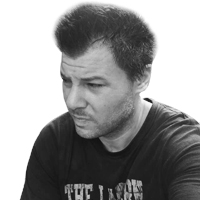Grandeur has always been a mainstay of moviemaking, but psychological grandeur is far rarer, and no film has possessed more of it than Carl Theodor Dreyer’s The Passion of Joan of Arc, which feels more timely than ever.
There is some irony in this, as we’re talking about a film that is marking its ninetieth anniversary with a sumptuous Blu-ray release from the ever-popular Criterion Collection.
The film itself has long been a mainstay on polls of the best movies ever. The premise is simple: in one of the greatest acting turns in film history, Renee Jeanne Falconetti plays the titular French saint, and we see her travails after she is captured by the English for her part in the Hundred Years War.
It’s a silent film, and yet it all but screams at the modern-day viewer.
In essence, The Passion of Joan of Arc is the ultimate movie version of someone getting pilloried by “gotcha” culture. But at the same time, it’s also the ultimate cinematic model for what to do should you find yourself at the bottom of a pile, with everyone getting a kick in, when you have committed no wrong.
Falconetti had two film roles in her career, of which this was the last. Dreyer first saw her in a play, tested her for the screen, then despaired that she wouldn’t work—until he saw the rushes. There was something about Falconetti’s features that codified the extreme portions of human suffering, and, in turn, what a person might be able to endure. She was shot sans makeup, as was everyone else in the film, often in tight close-ups where the human visage became like an exercise in cartography tracing a path to the soul.
Sets larger than any that had been built in Europe were erected for the film, with Dreyer scarcely using a number of them. This was about inducing feelings that had no scale, bursting beyond notions of measurement, with external stimuli—right down to the sets—factoring into what was tantamount to a psychological build.
Dreyer dug holes in the floor, as Orson Welles did later in Citizen Kane, so that he could shoot up at Falconetti, as if providing a view from an aerie in reverse. As we watch her get pummeled by her tormentors, the effect suggests a social hierarchy where those who try to destroy you are lesser by dint of their bloodlust.
The visual metaphor is apt now. We so often see people raging at themselves, with a need to redistribute that anger. Causes are taken up that are less about individual growth and social justice and more to do with perception. This is what The Passion of Joan of Arc is about almost as much as anything. As the mob attacks, as principles die, as integrity is railroaded in favor of appealing to the mob and not having to stand alone, our makeup-free humans start to look more and more feral; the beasts of the forests.
Sometimes when you watch a hockey or football game you’ll see one side dominate for most of its duration. You think the opposition can’t possibly win, but then the would-be victor starts to tire. What took two steps to accomplish now takes three. You actually see all of that play out in the faces of the actors in this film—the mob looks more and more depleted; Joan looks increasingly inexorable.
This is the art of outlasting someone or something that one is better than, and it’s what we see Falconetti-as-Joan pull off here. She still has no makeup, but something transformative has occurred as she becomes more and more radiant, and in turn more and more powerful, the mob a swarm of ants at the foot of a lion.
You want to be moved, pay attention to two scenes in particular in this film, and think about them in the context of our age.
Scared out of her mind, and faced with burning at the stake, Joan signs a confession for heresy. She avoids the fire, and gets life in prison.
Dreyer was one smart director, and he had the actress of his lifetime in Falconetti working for him. I think the two of them knew just what was required as the jailer shaves Joan’s head, a symbolic denuding of the external world.
She recants the confession, and says, in effect, “burn me, bitches.”
I’m not sure I know of a more emotional sequence in the history of cinema. Obviously, you’d like to avoid someone flambéing you alive. But sometimes we are at our finest when we have the courage to stand where we are, so that we might move forward in larger ways. Those aren’t reflected in the digital realm, nor in the countenances—both physical and psychological—of the advancing mob. They play out internally, and on occasion they are made visually manifest on a face like Falconetti’s in a film like The Passion of Joan of Arc.





